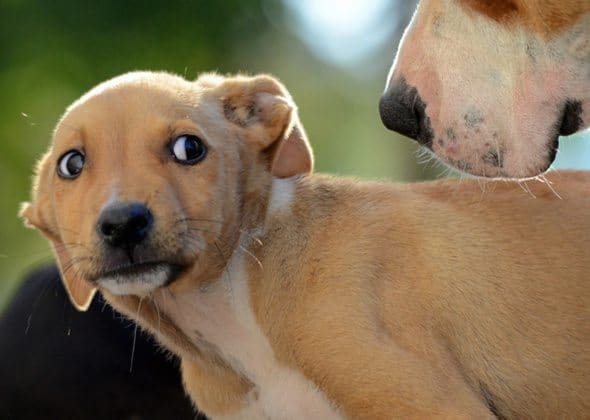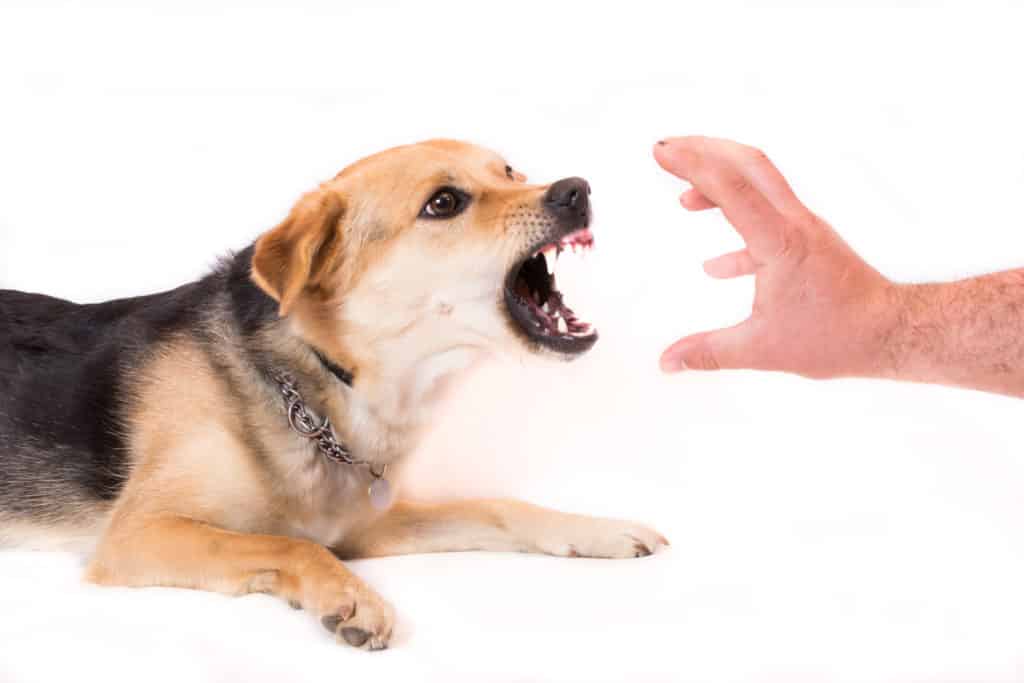Canine Body Language For Dog Aggression and Fearful Dog Training
“Understanding Canine Body Language is critical to helping modify fearful and aggressive behavior,” states, Harvard Animal Behaviorist and Director of Dog Training Phoenix. Here are bullet points and a crash course in understanding what calming and stress signals are.
Canine Body Language Signs of stress or arousal – taken in context and happen together or in groups. None of these happen in a vacuum.
- Yawning
- Penis crowning – often around food or resources (can be toy, place, or person), Stress is an arousal level. The sequence that leads to aggression. No female equivalent.
- Teeth chattering – a sign of arousal, a sign of frustration or aggression. Can happen when excited to play.
- Sweaty paws
- Lip licking – happens in succession, a sign of stress which is different than when hungry or after a meal. Repeated multiple times.
- Stress vocalization – whining, dry shallow cough or part of high pitched, trill sound, dry pant
- Tails – mean nothing, except when curled underbody which is a sign of stress. Must look at breed to know what a normal tail looks like in order to tell if a sign
- Chuffing – is usually seen in boxers. Cheek puffing or a blowing sound coming from the mouth.
- Dilated pupils – must be taken in a contest of lighting in the room. Look for soft eyes with dilated pupils. “Whale eye” eye is dilated, hard can see a sliver of white in the eye, usually followed by a bite. Whole-body goes stiff and still, then Whale eye then bite.
- Not eating – is a first signal that the dog is under stress and should be alerted. I try to give them a treat they don’t take it.
- Urination – submissive urination, or marking of territory. They urinate on all things, including people, and resources to feel comfortable.
- Ears pinned back – again subject to the breed of dog. “Bunny ears”.
- Freezes – watch mouth. The body goes stiff, hard eyes, ears can go back/down along head, very still, mouth starts to close very slowly. The bite usually follows. This happens with a bunch of other stress. Lots of energy comes from animals.
- Pacing – is different than being interested in something. They quickly walk back and forth. Lots of energy is being expelled by animals. Doesn’t have to be in a pattern, can be all over the place. Other stress signals accompany this like stiff body, vocalization, dilated pupils, and pulling on the lead.
- Slow of little movement – looks like a lump. Non-stressed dogs move around.
- Stiff posture – excessive shedding. An example of this happening is when the dog goes to the vet.
- Stretching – is not normal I’ve just gotten up and need to stretch my bones/muscles, but happens in a sequence with other stress.
- Trembling
- Muscle ridge – hard to see but can watch it happen around the top of the orbital eye bone and at top of the mouth.
- Urogenital checkout – during or just after a time of stress, the dog will make sure all of the private parts are still there.
- Excessive salivation – depending on the breed or what is happening. Can happen in an arousal state like waiting for the food so must be taken into context. Part of other stressors.
- Shallow or fast breathing – looks like holding breath and must be taken in context with the environment
Canine Body Language Calming signals/appeasement signals/non-aggressive intent – Offer and acceptance signals
- Look away – an active turn of the head. Chin up and turn your head. Can be used for having dogs not jump.
- Paw raises – can be done either standing or sitting. I mean you no harm.
- Sniffing – an area after a prolonged period in that area
- Sneezing – really likes what you are doing, like training and they get so excited then sneeze in succession
- Scratching – must be taken in context
- Blinking – to calm themselves or others. We can use to show them we mean no harm
- Shake-off – is the most common calming signal. Can start at the backside and goes all the way off. Very animated when it happens.
Canine Body Language Both calming and stress signals
- Yawning
- Lip/nose licking
- Sitting or lying down
- Pacing in an arc
Canine Body Language Distance increasing signals – back off, social distance, sub-threshold that means you must intervene, read these signals before aggression begins.
- Marking territory
- Hard eyes – a sharp line between pupil and iris
- Showing teeth – C shape, molars not showing, antagonistic pucker, full-frontal lip curl
- Ears alert and forward – depends on the breed
- Tense body or face
- Height posture height seeking – very significant, muzzle punch
- Lowered head and neck
- Excessive barking – low and fast. Not like the “you’re home” high-pitched fast yipping bark or the alarm barking.
FAS-Ladder-Dog-Regular-Version-1_EDITED-1
Note. The short video clips below are for private educational purposes only and they fall under the “Fair Use” guidelines as spelled out in Section 107 of the US Copyright Act. These short sample video clips are not to be duplicated, shared, or distributed. They are only for educational purposes.
The videos are almost 20 years old, so apologies in advance for the very poor video quality.
If you are interested in learning more about canine body language, you can order a FULL 2 DVD Set, If anyone still has a DVD Player. Unfortunately, most people do not have a DVD player anymore and this is not offered in any other format than DVD. The DVDs are called The Language of Dogs Understanding Canine Body Language by Sarah Kalnajs.
CHECK AMAZON
Phoenix Dog Training Does Not Make ANy Monies Off Of The Purchases of the DVDs from Amazon.
Part 1 Educational Clips Fair Use Guidelines Use Section 107, US Copyright Act.
A Small Sample of Some Stress Signals Dogs can Display
Part 2 Educational Clips Fair Use Guidelines Use Section 107, US Copyright Act.
A Small Sample of Some Appeasement and Calming Signals Dogs can Display
If you have a fearful or aggressive dog contact Phoenix Dog Training for help Now at (602) 769-1411
CONTACT US ABOUT YOUR DOG
Let us know how we can be of service to you and your dog.
Updated February 5th, 2022



